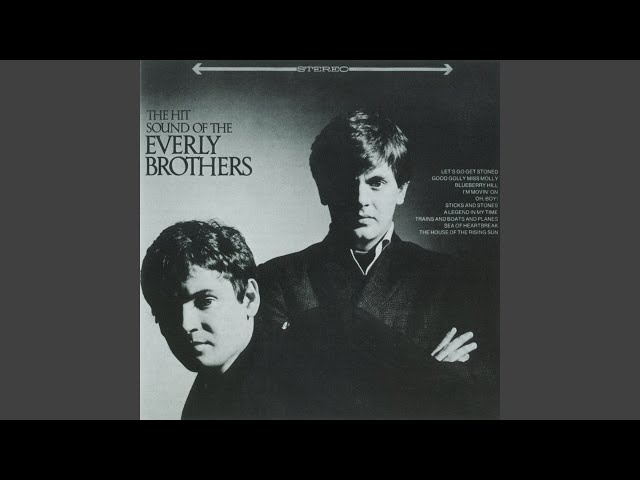
About the song
The Everly Brothers. Those golden voices, that exquisite harmony – a cornerstone of American rock and roll. But today, we delve into a lesser-known chapter of their illustrious career, a song that caused quite a stir upon its release in 1967: Let’s Go Get Stoned.
---> Scroll down for the VIDEO at the END
Now, hold on to your fedoras for a minute. This track isn’t an ode to illicit substances, at least not intentionally. The landscape of popular music in the mid-60s was undergoing a seismic shift.
The British Invasion, spearheaded by the likes of The Beatles and The Rolling Stones, was injecting a potent dose of rock into the mainstream. American artists were scrambling to keep pace, and The Everly Brothers, once the darlings of doo-wop, were no exception.
---> Scroll down for the VIDEO at the END
Let’s Go Get Stoned arrived on the scene amidst this whirlwind. Written by the songwriting team of Ashford & Simpson, the song had already been recorded by The Coasters and Ronnie Milsap. However, it was Ray Charles’ powerful 1966 rendition that truly captured the public imagination, even reaching number one on the R&B charts.
So, here were The Everly Brothers, facing not only the winds of musical change but also the shadow of a soul legend. Their version of Let’s Go Get Stoned is a fascinating artifact of this era.
On the surface, it embraces the new rock & roll energy. The guitars churn with a fuzzed-out intensity, a far cry from the gentle strumming of their earlier hits. The Everly Brothers themselves sing with a newfound urgency, their voices pushing the boundaries of their trademark harmony.
But beneath this veneer of rock & roll rebellion lies a hint of their doo-wop roots. Listen closely, and you can still hear those gorgeous harmonies weaving their magic. It’s almost as if they’re winking at their audience, acknowledging the changing times while staying true to their musical identity.
Let’s Go Get Stoned is a song caught in a fascinating moment in music history. It’s not quite doo-wop, not quite rock & roll, but a curious hybrid of the two. Whether it was intended as a playful experiment or a genuine attempt to embrace the new musical landscape, the song remains a testament to The Everly Brothers’ enduring adaptability and their willingness to take creative risks.
So, put on your dancing shoes, fire up the record player, and prepare to be surprised by this unexpected chapter in the Everly Brothers’ story.